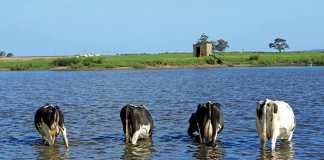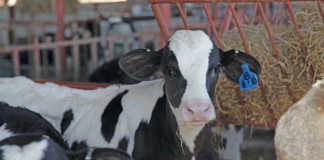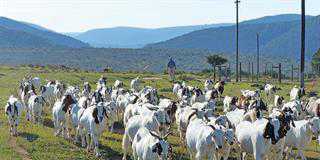On many farms animals are grazed in vleis and farmers should be aware of liver and conical fluke infestations.
The venereal transmitted disease trichomonosis is causing serious reproduction losses and the zoonotic disease, bovine brucellosis, needs all our attention.
If you buy in animals, make sure they are disease free and quarantine them before introducing them into the herd or flock.
Contact your vet to help you update your vaccination and management programmes for production animals.
The following reports were received from practices in Mpumalanga (MP), Gauteng (G), Limpopo (L), North West (NW), Free State (FS), KwaZulu-Natal (KZN), Eastern Cape (EC), Western Cape (WC) and Northern Cape (NC):
Internal parasites
.jpg)
The infestation of cattle with measles can be prevented by educating farmworkers on the lifecycle of human tapeworms. Discuss control measures with your vet.
External parasites
.jpg)
Winter time is lice time. Animals in a poor nutritional state are the most affected. Sucking lice cause anaemia and biting lice cause severe irritation and animals do not feed well.
Tick-borne diseases

The prevailing belief is that tick-transmitted diseases occur mainly in summer. Reports received from most provinces show this is not the case, and farmers should be on the lookout for clinical signs so that animals can be treated in time.
Vaccines are available to control all of these diseases. Discuss preventative measures with your vet.
Insect-transmitted diseases

Insect numbers are at a low during the winter months. Now is the time to order vaccines for these diseases so that animals can be vaccinated in time before the rainy season starts in the summer rainfall areas.
Venereal diseases

New cases of trichomonosis are reported every month and this disease is getting out of hand. Cattle study groups should discuss preventative and control measures with their vets.
Bacterial diseases

Beware when buying animals at auctions. Bringing in one infected animal with brucellosis or Johne’s disease into a clean herd or flock may lead to disaster.

The same can be said for EBL – this debilitating disease costs the dairy farmer huge amounts of money.
There is no treatment for viruses – animals have to be protected by vaccinations. Discuss vaccination programmes with your vet.
Poisonings

Multifactorial diseases & other conditions

Metabolic diseases

Reproductive diseases

Feedlot Report
- July was a healthy period in sheep feedlots. A few cases of pulpy kidney and pneumonia occurred sporadically.
- Underweight lambs arriving at feedlots always risk becoming diseased and struggle to adapt.
- Lambs that grazed on harvested crop fields sometimes had rumen damage when slaughtered.
Cattle feedlots
- Numerous calves died or became ill as a result of pneumonia. Fluctuating weather conditions were the major contributing factor.
- Parafilaria damage caused big financial losses at abattoirs.
- Liver fluke infestation caused livers to be condemned at the abattoir and financial losses occurred due to retarded growth tempo of calves.
- A few cases of lumpy skin disease occurred. Vaccination against this disease is often neglected and can lead to big losses in feedlots.
- C-grade cattle in poor condition arriving at feedlots from the veld, struggled to adapt on the feedlot rations and many died.
- Abortions occurred in a breeding herd where pregnant cows were vaccinated with a live viral vaccine against respiratory disease. Infectious bovine rhinotracheitis virus (IBRV) was shown to be the cause of the abortions.













